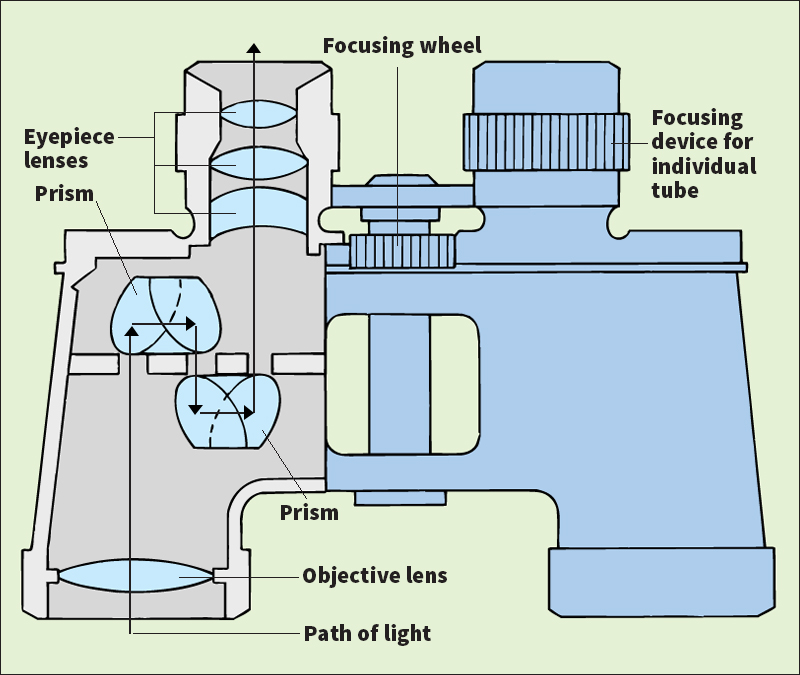Binoculars are two identical telescopes joined side by side so that a viewer sees an enlarged image with both eyes at once. An objective lens, or field lens, at the front of each telescope gathers light from the object being viewed. This lens forms a magnified image that is upside down and reversed. In prism binoculars, the most common type of binoculars, prisms in each tube invert and reverse the image. In field glasses, a second lens in each tube performs this function. In both types of binoculars, the light then travels through lenses located in an eyepiece. These lenses magnify the image further, and the viewer sees a highly magnified, correctly positioned image through the eyepiece. Prism binoculars can provide more magnification and wider fields of view than can field glasses.

To focus on objects at different distances, the viewer changes the space between the objective lens and the eyepiece in each tube. Most binoculars have two devices for changing this space: (1) a focusing wheel mounted between the tubes, and (2) a wheel mounted on one eyepiece. Turning the first wheel adjusts the distance in both tubes. Turning the second wheel changes the distance in only one tube to accommodate differences between the viewer’s eyes.
Most binoculars are stamped with a code. In a code that reads 7 X 50, for example, 7 X represents a magnifying power of seven times. The diameter of an image produced by binoculars with this power is seven times the diameter of the object being magnified. Most common binoculars have a magnification of 7 X or 8 X .
The 50 in the code indicates the diameter, in millimeters, of the objective lens. For most viewing, 30- or 35-millimeter lenses are adequate. For viewing at night, a 50-millimeter lens is more suitable, because it gathers more light. Most binoculars are also stamped with a third number, which tells how wide an area can be seen from a distance of 1,000 yards (910 meters).
When choosing a pair of binoculars, make sure the telescopes are lined up correctly. After mounting the binoculars on a tripod, or steadying them against a wall, see if an object in the center of one telescope is in the center of the other. Also, see if an object near the edge of one field of view is about the same distance from the edge of the other field.
